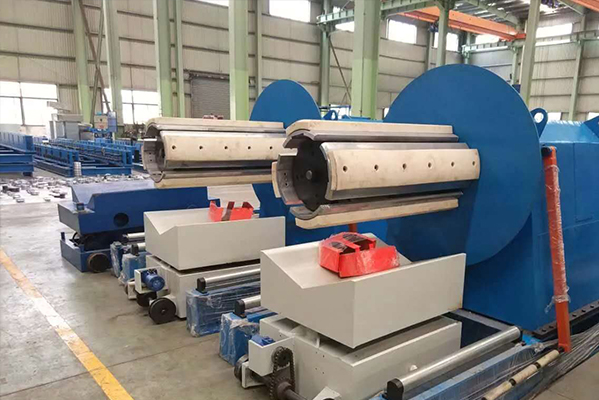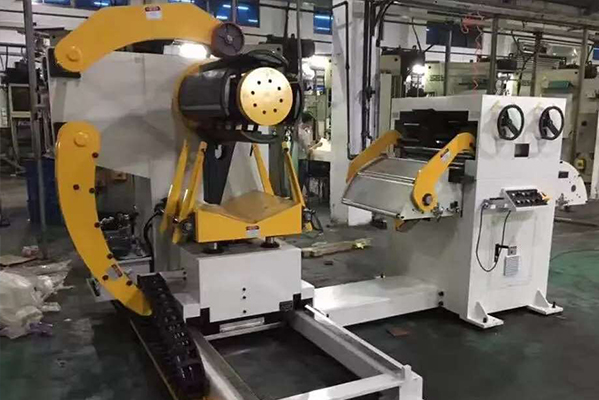Navigation Menu
Contact Us
- Email:
- info@wxavatar.com
- Address:
- Yurong Village, Yuqi Street, Huishan District, Wuxi, China.
Release Date:Feb 22, 2025 Visit:61 Source:Roll Forming Machine Factory
Roller machines are essential tools in industries such as manufacturing, printing and material processing, allowing them to efficiently shape, flatten or coat materials. However, like any industrial equipment, roller machines have inherent hazards that can pose significant risks to operators and workplace safety. Understanding these hazards is essential to implementing effective safety measures and ensuring a safe working environment.

Key roller machine hazards
Pinch point and entanglement risks
One of the most common hazards of roller machines is pinch points, which are places where two or more rollers come together. An operator's fingers, hands or clothing can easily become caught in these areas, resulting in crushing, amputation or entanglement injuries. Loose clothing, jewelry or long hair can increase the risk of being caught in the machine.
Mechanical hazards of moving parts
Roller machines consist of moving parts such as rollers, gears and belts, which can cause serious injuries if the operator comes into contact with these parts. Unexpected movement or failure of the machine can exacerbate these risks, so proper guarding and maintenance are essential.
Material handling risks
Roller machines often need to handle heavy or bulky materials such as metal sheets, paper rolls or fabrics. Improper lifting techniques or inadequate handling equipment can cause musculoskeletal injuries, strains, or sprains. Additionally, sharp edges on the material can cause cuts or abrasions.
Noise Exposure
The operation of roller machines generates high levels of noise, which can cause hearing damage over time. Prolonged exposure to noise levels above 85 decibels (dB) can cause permanent hearing loss, making hearing protection essential.
Electrical Hazards
Roller machines rely on electrical systems to power their operation. Faulty wiring, exposed electrical components, or improper maintenance can result in electric shock, short circuits, or even fire. Operators must be trained to recognize and address electrical hazards.
Ergonomic Challenges
Roller machine operators often perform repetitive tasks, such as feeding materials or adjusting machine settings, which can lead to ergonomic issues such as repetitive strain injuries (RSIs) or fatigue. Poor workstation design can further exacerbate these issues.
Mitigating Roller Machine Hazards
To address these hazards, employers and operators must prioritize safety through a combination of engineering controls, administrative measures, and personal protective equipment (PPE).
Engineering Controls
Install guards and barriers around the drum and other moving parts to prevent accidental contact.
Use automated feeding and unloading systems to minimize manual operation.
Implement noise reduction measures, such as soundproofing or vibration dampening.
Administrative Measures
Develop and enforce standard operating procedures (SOPs) for safe machine operation.
Provide operators with comprehensive training on hazard identification and emergency response.
Perform regular maintenance and inspections to ensure the machine is in optimal condition.
Personal Protective Equipment (PPE)
Require operators to wear appropriate PPE, such as gloves, safety glasses, hearing protection, and steel-toed boots.
Ensure PPE is properly installed and maintained to provide maximum protection.

Importance of a Safety-First Culture
In addition to technical solutions, fostering a safety-first culture is critical to minimizing the hazards of rollers. Encouraging open communication, reporting of near misses, and continuous improvement of safety protocols can create a proactive environment that identifies and addresses risks before they lead to accidents.
Conclusion
Rollers are powerful tools that drive efficiency and innovation across industries, but they can also present significant hazards if not managed properly. By understanding the risks associated with pinch points, moving parts, material handling, noise exposure and ergonomic challenges, companies can implement effective safety measures to protect their employees. By combining engineering controls, management practices and a strong safety culture, roller hazards can be mitigated to ensure a safer, more productive workplace.